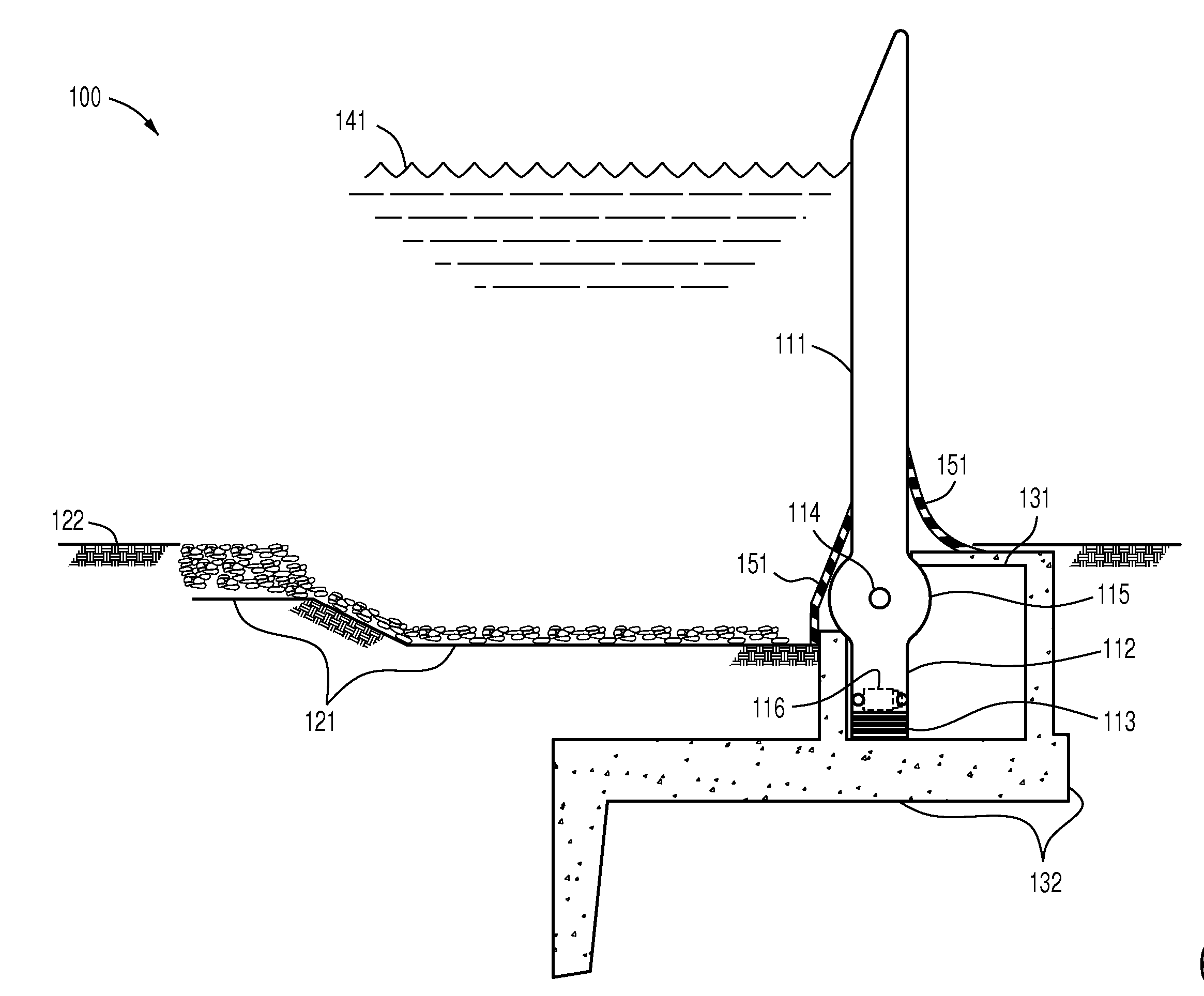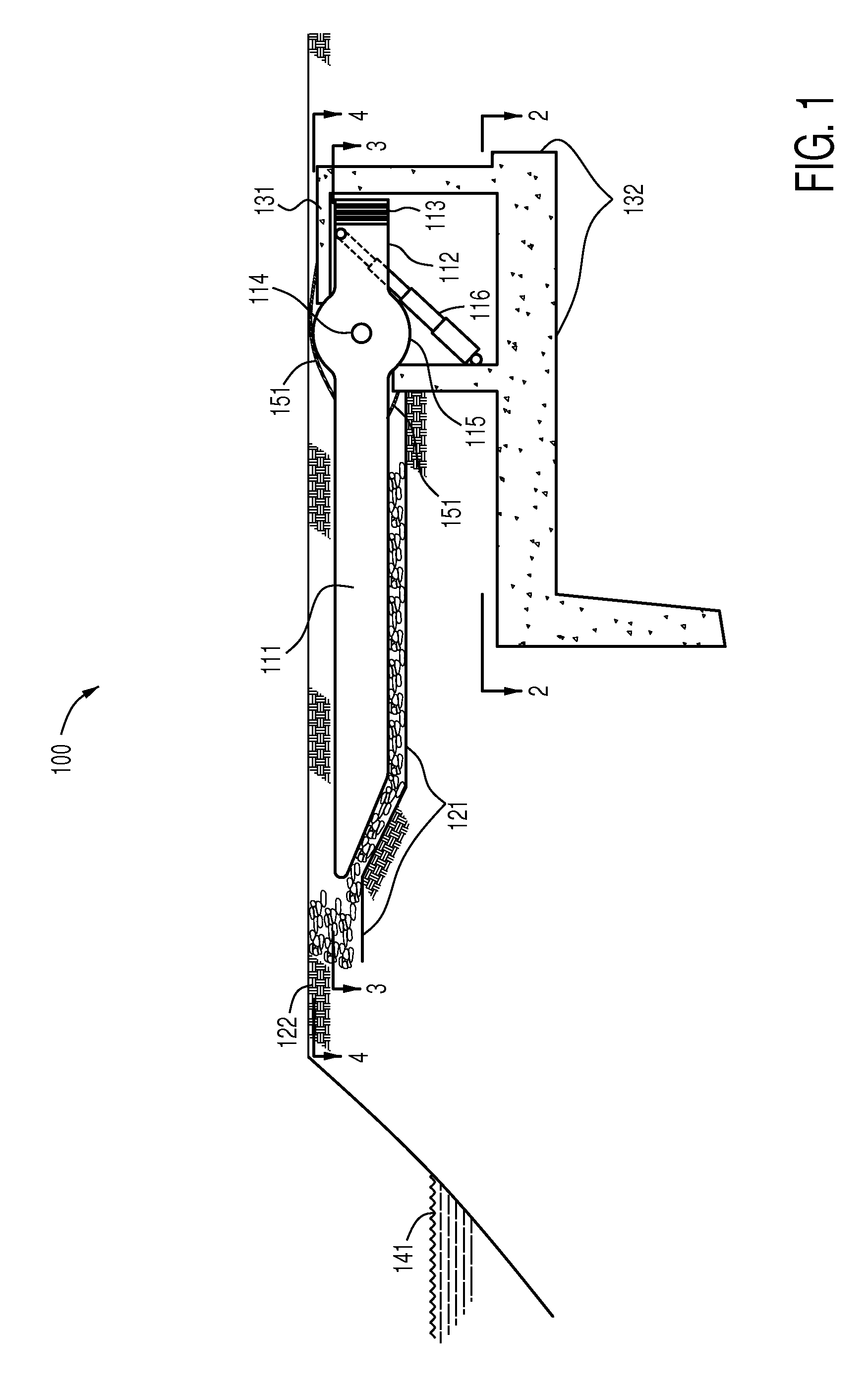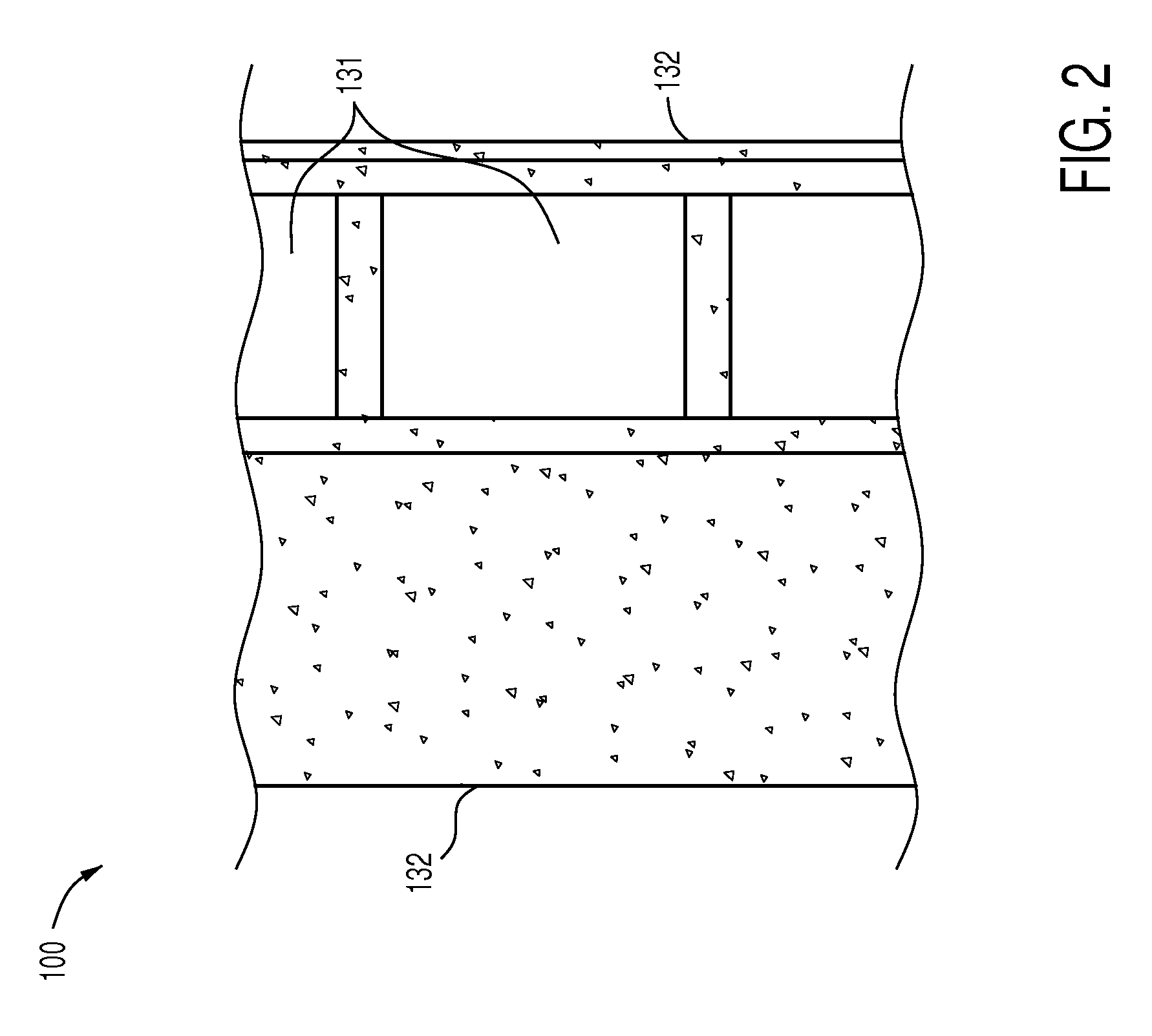Self-deploying floodwall
a floodwall and self-deploying technology, applied in the field of floodwalls, can solve the problems of increasing the frequency of coastal flooding, long response time, and limited application of temporary flood protection structures, and achieve the effect of improving the design and functionality of conventional cantilever floodwalls
- Summary
- Abstract
- Description
- Claims
- Application Information
AI Technical Summary
Benefits of technology
Problems solved by technology
Method used
Image
Examples
Embodiment Construction
[0019]Referring first to FIG. 1, there is shown the preferred embodiment of the invention in the form of self-deploying floodwall apparatus 100 that is constructed onshore as a permanent structure at a predetermined distance away from flood prone waters 141. The apparatus comprised of longitudinally connected stem segments 111 that are buoyant and normally reside in the down position inside the porous pre-excavated shallow trench 121, with a small depth of cover from native soil 122 over it. It will be appreciated that this inconspicuous arrangement arises from the fact that each stem segment 111 is buoyant due to internal voids for example, and therefore may be devoid of structure which if present would project either towards the water or which would project away from the water from the opposed side of the stem segment 111.
[0020]The stem segments 111, of which any number may be provided depending upon the length of the floodwall apparatus 100, collectively or individually when only...
PUM
 Login to View More
Login to View More Abstract
Description
Claims
Application Information
 Login to View More
Login to View More - R&D
- Intellectual Property
- Life Sciences
- Materials
- Tech Scout
- Unparalleled Data Quality
- Higher Quality Content
- 60% Fewer Hallucinations
Browse by: Latest US Patents, China's latest patents, Technical Efficacy Thesaurus, Application Domain, Technology Topic, Popular Technical Reports.
© 2025 PatSnap. All rights reserved.Legal|Privacy policy|Modern Slavery Act Transparency Statement|Sitemap|About US| Contact US: help@patsnap.com



